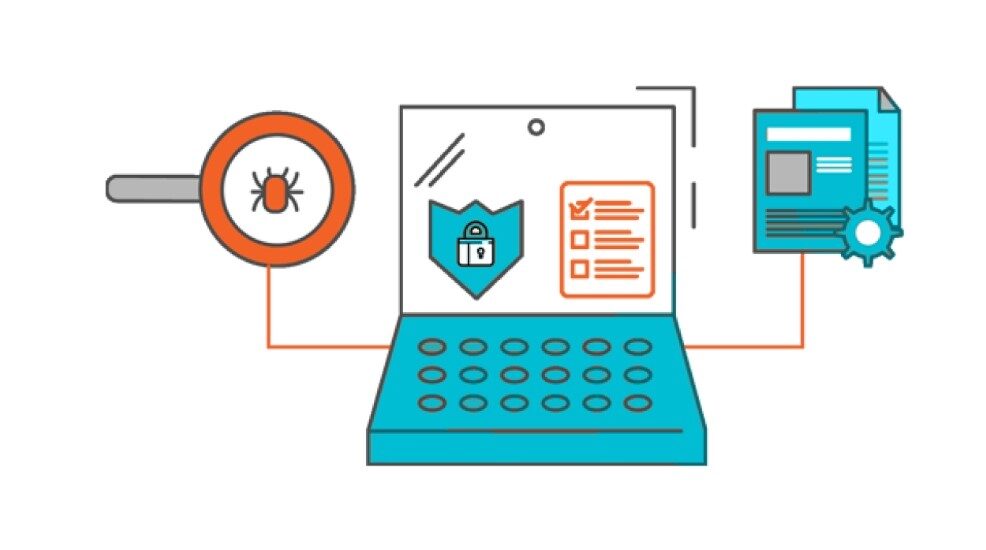Penetration testing (pentest) – This is a way to check the safety of computer systems, networking, applications or devices, consists in simulating the actions of attackers, who are trying to hack them and gain access to data and resources. purpose – discover and fix weaknesses, which can be operated for violation of confidentiality, integrity or accessibility of information. 
Penetration testing – this is a service, which is provided by companies or freelancers specializing in information security and having the necessary knowledge, Experience and tools for conducting high -quality and professional testing. Pentest as a Service service (Beat) can be ordered as external, and internal clients, who want to verify the reliability of their systems and applications and protect them from possible attacks.
What types of testing for penetration are?
Penetration testing can be of different types, depending on the volume, depths, goals and methods of testing. Here are some of them:
- Penetration testing around the perimeter: checks the security of the external boundary of the network or system, which is available from the Internet. odd/even – Find out, Is it possible to penetrate the network or system through open or unprotected ports, services, Protocols or devices. Such testing may include port scanning, Determination of versions and vulnerabilities of services, The use of vulnerabilities, obtaining access to systems, Collection of information and others.
- Penetration on the internal network: checks the safety of the internal network or system, which is available only from the inside of the organization or a protected perimeter. odd/even – Find out, Is it possible to extend the attack inside the network or system, and also gain access to important data and resources. Such testing may include network scanning, Determining user roles and rights, The use of vulnerabilities, obtaining access to systems, Collection of information, Moving over the network, Increasing privileges and others.
- Penetration on web applications: Checks the safety of web applications, who work on web servers and process requests from customers via the Internet. odd/even – Find out, Is it possible to penetrate the web application through its interface, functionality or logic. Such testing may include code analysis, Determination of vulnerabilities, The use of vulnerabilities, obtaining access to data, Collection of information, Manipulation sessions, The introduction of code and others.
- Penetration on mobile applications: checks the safety of mobile applications, which work on mobile devices and exchange data with servers via the Internet. odd/even – Find out, Is it possible to penetrate the mobile application through its interface, functional, logic or data storage. Such testing may include code analysis, Determination of vulnerabilities, The use of vulnerabilities, obtaining access to data, Collection of information, The introduction of code, Traffic interception and others.
What are the pluses testing for penetration?
Penetration testing gives a number of advantages for customers, who want to increase the level of security of their systems and applications. Here are some of them:
- Detection and correction of weaknesses: helps to find and eliminate weaknesses, which can be operated for penetration into systems and applications, as well as for violation of confidentiality, integrity or accessibility of information. In this way, Penetration testing increases the level of security of systems and applications from real attacks.
- Compliance with standards and standards: helps confirm compliance with systems and applications with various standards and standards, which require regular or periodic safety checks. for example, Such standards and standards can be PCI DSS, ISO 27001, GDPR, Hipaa and others. In this way, Penetration testing increases the trust and reputation of customers in front of their clients, partners and regulators.
- Reduction in risks and expenses: helps reduce risks and expenses, associated with possible security incidents, which can lead to a leak, damage or inaccessibility of data and resources, as well as fines, want, Losses or damage to business. In this way, Penetration testing increases the efficiency and efficiency of customer business processes.
How to choose a penetration testing?
For, to choose high -quality and professional testing for penetration, several factors need to be taken into account, such as:
- Experience and reputation. The penetration testing service should have sufficient experience and good reputation in the field of information security. it's desirable, so that she has certificates and rewards, which confirm her qualifications and competence. Also important, for the service to have positive reviews and recommendations from its previous or current customers, who are satisfied with the results and quality of work.
- Specialization and methodology. Should have specialization and methodology, which meet the needs and goals of the customer. for example, If the customer wants to check the security of his web application, then the testing service for penetration should have experience and knowledge in the field of web security, as well as use proven and effective methods and tools for testing for penetration on web applications. It is also desirable, for the service to follow any standards or manuals, which regulate the process and stages of testing for penetration, such as Owasp, NIST, PTES and others.
- Price and terms. The penetration testing service should offer a reasonable price and terms for its work. Price and terms may depend on many factors, such as the volume and complexity of testing, Type and number of systems and applications, which need to be checked, Customer requirements and expectations, qualifications and resources of the contractor and others. therefore, before, How to conclude an agreement, It is necessary to agree on all the details and working conditions, and also get a clear and transparent estimate and work schedule.
- Guarantees and responsibility. The service must provide guarantees and bear responsibility for its work. Guarantees may include the contractor’s obligation to provide the customer with a detailed and qualitative report on the results of testing for penetration, and also offer recommendations and decisions to eliminate the discovered vulnerabilities. Responsibility may include the obligation of the contractor to comply with the terms and budget of the work, as well as ensure the confidentiality and safety of data and resources of the customer during and after testing for penetration. It is also desirable, For the penetration testing service to have insurance or agreement on compensation for possible losses or damage, which can be caused as a result of work.
Penetration testing service – This is a useful and demanded service, which helps customers increase the level of security of their systems and applications, identify and eliminate vulnerabilities, comply with standards and standards, reduce risks and costs, and also increase trust and reputation. but, for, to get the maximum benefit from the service, you need to choose it carefully and responsibly, Given the experience and reputation, Specialization and methodology, price and terms, guarantees and liability of the contractor. It is also necessary to cooperate and communicate with the performer at all stages of work, provide the necessary information and resources, as well as control and evaluate the quality and results of work.












